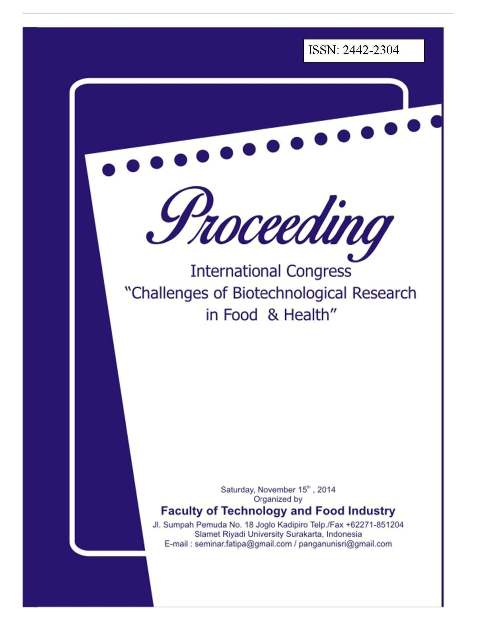MICROBIAL CONVERSION OF CASSAVA STEM (Mannihot esculenta) CELLULOSE INTO REDUCING SUGAR BY Trichoderma reesei PK1J2
Abstract
Cassava stems can be utilized as an alternative energy source to produce bioethanol due to itscellulose content, polysaccharide compound can not directly used by yeast. Therefore, cellulose need to be
hydrolyzed into monomers prior to tranformation into ethanol by Saccharomyces cerevisiae. Hydrolysis
can be performed by cellulase‐producing fungi, such as Trichoderma reesei PK1J2 with ammonium sulphate
used as nitrogen source. The effect of ammonium sulphate addition to the growth and reducing sugar
production rate of Trichoderma reesei from cassava stems was investigated. Hydrolysis was conducted
without pretreatment. Cassava stem was degraded into small pieces with and without addition of
ammonium sulphate. The concentration of (NH4)2SO4 were 0%; 0,5%; 1% and 1,5%. During cellulose
fermentation of cassava stem, analysis were carried on cellulose enzyme activity, dry matter loss,
glucosamine content, and reducing sugar. Initial spore concentration was 106 spores/g of cassava stem.
Addition of ammonium sulphate seem to affect the growth but did not affect of reducing sugar production
of Trichoderma reesei, therefore hydrolisis continued without ammonium sulphate addition. Highest
levels of reducing sugars was obtained after three days of fermentation which was 10,828 g/L.
Keywords: Cassava stem, Trichoderma reesei, cellulose
Downloads
Published
2015-04-01
Issue
Section
Artikel


